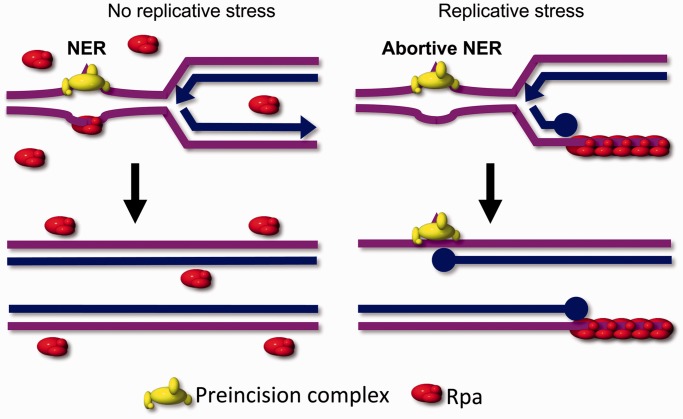Figure 6.
Model for the interference between NER and replicative stress. Left: in the absence of replicative stress, free Rpa is abundant and available to perform coupling between pre-incision and post-incision complexes in NER. The removal of DNA lesions allows unperturbed progression of replication. Right: when excessive replicative stress is present, as in the treatment of Rev3−/− MEFs with low-dose UV, or of wild-type (or Rev3−/−) cells with HU, Rpa is sequestered at the resulting extended ssDNA tracts. Therefore, Rpa is unavailable to act during NER, resulting in the persistence of early NER factors at lesion sites and in an NER defect. This will further aggravate the consequences of replicative stress. This positive feedback loop explains the extreme UV sensitivity of proliferating Rev3-deficient cells (13,21).

